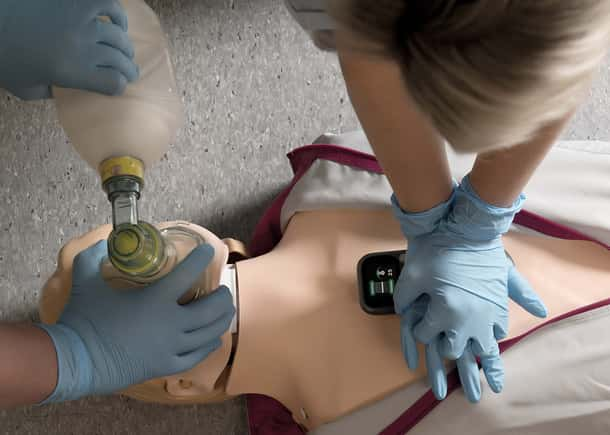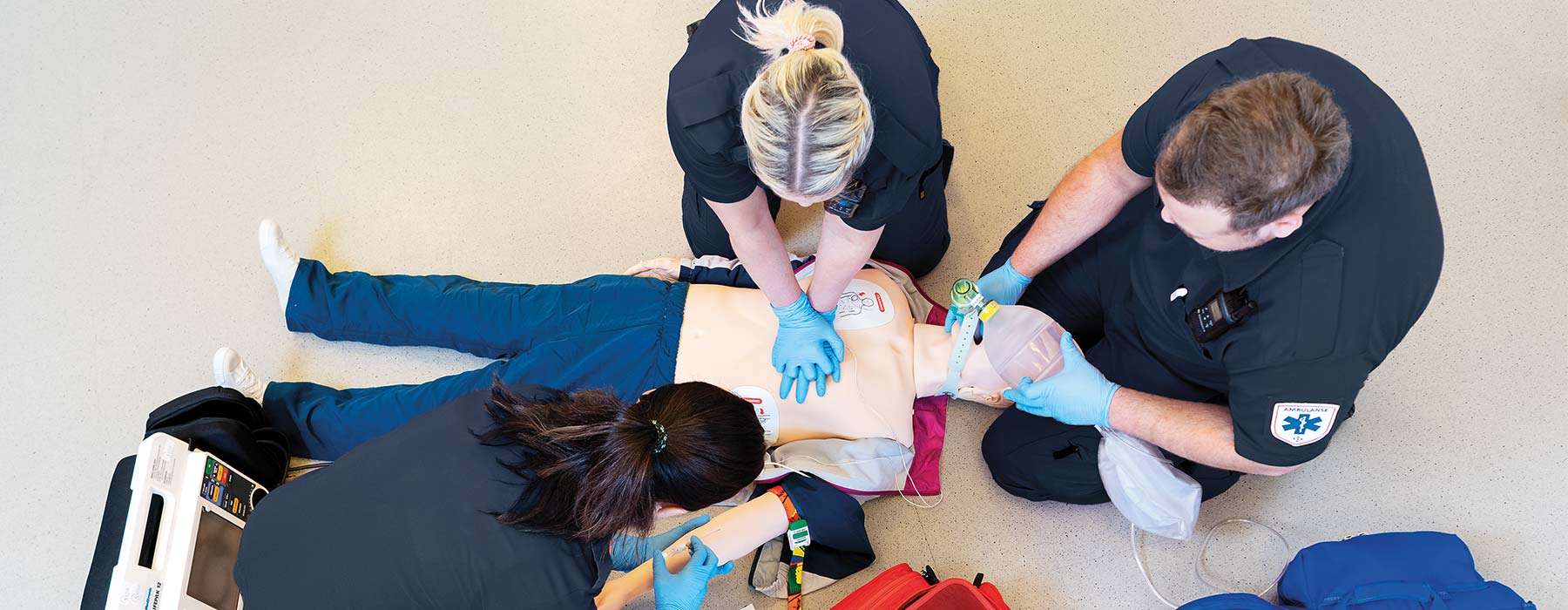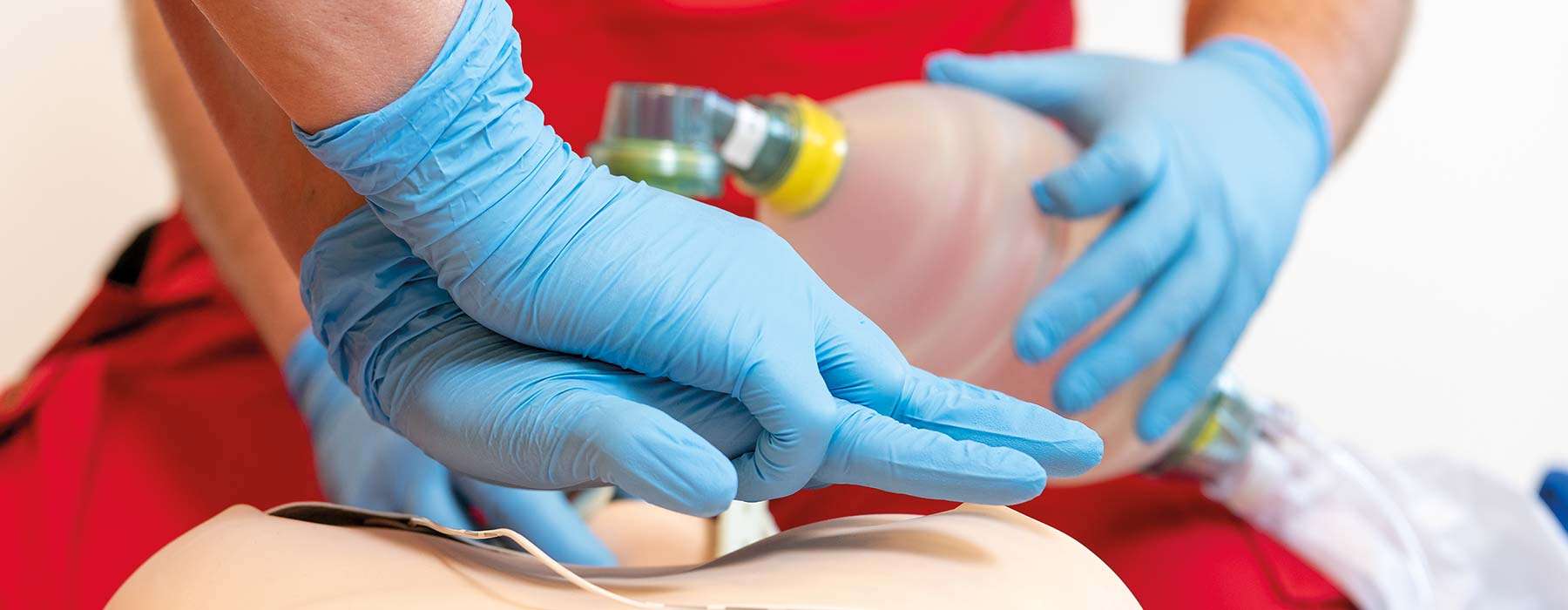From Training to Survival in a County Jail
Customer Story

Customer Story

When McLennan County Jail’s nursing staff participated in a code simulation drill, they didn’t expect that they would use their training to save an inmate’s life just two weeks later.

McLennan County Jail services an average population of 1,300 inmates in its Waco, TX facility.
Jesse "J" Tankersley, Director of Nurses at McLennan County Jail, was in his office doing paperwork one afternoon when he got the call he'd been dreading: an inmate was in cardiac arrest.
Upon rushing to the scene, he found his team of nurses and certified medical assistants managing the emergency flawlessly. "They called the medical code, emptied the tank, and the nurses arrived and started their thing," J marvels. "It was seamless."
"It was very quiet in the room," he remembers. "They were just doing what they were supposed to do. I went to assist and ask if they needed my help, and when I walked up to the patient, he was actually taking his first breath."
The team had successfully brought back the inmate – thanks to their immediate initiation of high-quality CPR, usage of the AED, and effective teamwork.
Just two weeks earlier, the staff nurses had trained for this exact scenario using simulation. They practiced CPR on a realistic manikin and learned how to work effectively as a team while following facility protocols.
As a result, the nurses were able to come together as the high-performance team they'd recently trained to be.
- Jesse “J” Tankersley
Director of Nurses, McLennan County Jail
The challenge

J oversees a team of about 53 medical staff, consisting primarily of nurses and certified medical assistants.
"Our goal as medical professionals is to care for these inmates for any medical issue that they may have," he says. "My interests are taking care of folks, making sure that they're properly cared for and that their life is as good as it possibly can be in our care."
Having spent 30+ years in a hospital setting where education is prominent, J quickly recognized an important need to bring more education into corrections when he started at McLennan. "My goal was to establish any kind of education experience for our nurses to increase their competency in taking care of patients," he explains.
One significant area of concern was cardiac arrest. This had been keeping him up at night – and for good reason.
![]()
Between 2000 and 2019, heart disease was responsible for about 1 in 4 inmate deaths.1,2
![]()
of deaths in state and federal prisons3
![]()
of deaths in local jails4
Most cardiac arrests occur when a diseased heart’s electrical system malfunctions.5
"It was obvious from the very beginning that our nursing staff needed educational opportunities to work together as a team to create the best outcome for our patients that are involved in a medical code...to really hone in on educational practices that would help them be more proficient and confident," he says.
- Jesse “J” Tankersley
Director of Nurses, McLennan County Jail
The solution

J knew that his facility lacked the proper resources to conduct the necessary training. He reached out to Laerdal, and conversations began about how they could help accomplish his training goals. He decided to try Laerdal’s Accelerate program. As part of this turnkey program, Laerdal would come onsite and provide all the necessary equipment, simulation scenarios, operators, and adjunct educators needed to run a code drill.
Additionally, through the utilization of various data sources – including a SimCapture visual debriefing system – they would be able to benchmark the facility’s current activities and objectively identify areas of opportunity.
During the code scenario, the nurses could practice the critical psychomotor skills of CPR and how to work effectively together as a team. And Laerdal would tailor the scenario to reflect McLennan’s specific policies and protocols to test whether they would work as expected.
When you think about emergency response, a prison setting offers a unique challenge: providing care isn’t as simple as walking into a room.
"If someone is in full cardiac arrest inside of a tank that has 14 to 20 other people, all of those other people have to be cleared out first and safely secured before medical can go in," J explains. "It's a very dynamic scene, a very dynamic situation because 2 entities have to work very closely together to get the job completed."
By conducting the simulation in their actual space, they would be able to challenge those policies and procedures and make sure the system was ready to handle whatever sort of emergency came their way. Without challenging the system, it would be difficult to know how it actually fares in an emergency.
The results

As planned, the Laerdal team came onsite to McLennan and conducted the Accelerate training. The nurses practiced with a high-fidelity manikin that gave them real-time feedback on their CPR performance, including compression depth, rate, and fraction. After that, they ran the man-down code drill so that the team could train on how to respond together effectively.
The performance data collected during the simulation provided a “roadmap” for what J and his team could do with what they’d learned in individual skills, team communication, and system readiness.
"It was a huge difference because it gave data on where we could improve," J says. "It produced data for us to look at and say, hey, this is exactly where we need to focus our attention, where we need to have...regular training."
One major system discovery that the simulation uncovered involved the AED. An AED was typically kept in the emergency bag, but during the simulation scenario, they discovered that it wasn’t in the bag. This posed a major issue, considering that 90% of victims who receive a shock from an AED in the first minute live.6 However, they were able to replace the missing AED before the problem ever affected a real patient.
![]()
The U.S. Office of the Inspector General evaluated and assessed inmate deaths that occurred in Federal Bureau of Prisons institutions between 2014-2021. A February 2024 report on their findings revealed AED issues as the #1 deficiency in institutions’ emergency responses.7
Seventy-eight of 344 inmate deaths involved AED issues, including:8
The second most common deficiency was emergency first response issues related to the timeliness or quality of the initial emergency response - including CPR.
The foresight to prepare for codes through rigorous training resulted in their inmate save.
"I worked in the ER for over 30 years, and I can count on 2 hands [the] CPR saves,” J shares. “It just doesn’t happen."
“It played a major impact for our nursing staff to show the importance of consistent and professional training, and what that can do,” he adds. “They emphasize the importance of the training and how it helped.”
That's why J plans to keep his partnership with Laerdal going. He will continue working with Laerdal to conduct training in other areas, such as preparing for trauma incidents and Naloxone training.
"Our training program was very inconsistent," he says. "With the [Accelerate] program, it is consistent, it is regular, and it provides data for us to learn from and it's going to change the whole practice for our correctional setting."
"It will have a direct impact on the lives that we will potentially save here in the jail," he asserts.
"Knowing that we are on a path to improve system and process...that's a big deal. And our Major is very supportive of this."